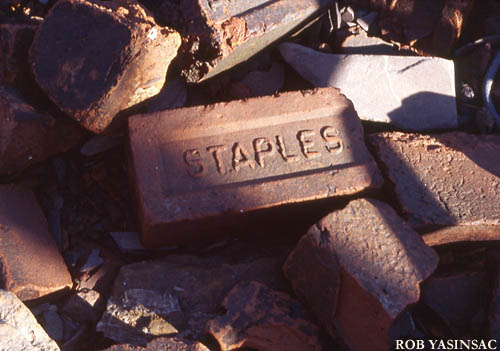
Staples Brickyard
MALDEN, NY

Just north of Saugerties is
a small residential community known as Malden. Not much remains today in the way
of commercial enterprises there, but the riverfront was once a place bustling
year-round with the activity of brickyards and ice harvesting facilities. The
main brickyard at Malden, the Staples plant, survives as one of the most-intact
brickyards along the Hudson, even in a state of complete ruin and decay.
However, certain features have been demolished or removed from the site in
recent years. Before long, it may be that one could only investigate first-hand
the history of the site through the thousands of crumbled brick along the shore.
In the 19th-century, Alva Staples started a brickyard north
of Kingston proper at the area known as the Steep Rocks. His son, Alva Jr.
married a woman from the Terry family, who owned a brickyard adjacent to the
Staples' Kingston plant. In 1905, young Alva set out on his own and started a
brickyard a dozen or so miles upriver at Malden. The Malden yard prospered even
more after it was rebuilt in 1920. Although the large steel kiln sheds that were
common at other yards in the 20th century were not built here, the rebuilt
Staples yard featured a new brick machine building and a new dryer building.
Both were designed by noted Haverstraw-born, brick industry inventor/architect,
David Strickland. The old wooden kiln sheds remained, and trucks carried brick
to a fixed-location gantry for loading onto barges (completely modernized
brickyards featured moveable gantries or cranes that scrolled along the length
of the kiln sheds).
Although many plants attempted various forms of modernization in
the first half of the 20th century, it was near the century's mid-point
that the ringing of the industry's death knell could be heard. A variety of
reasons can be cited for the demise of Hudson River brick making - from clay
impurities (real or perceived), to the proliferation of concrete building blocks and cheap imported brick flooding the market, to antiquated machinery and brickmakers'
inability to invest in the latest technologies, or outright exhaustion of local
clay deposits, among other factors. Many yards ceased production for the
duration of World War II - brick was not needed for the War effort - and simply
never reopened after 1945.
The Staples yard trudged on in the post-war period as one of
a dozen plants operating in what George V. Hutton described as the best decade
of brick making in the history of the Hudson River. However, the good times for
local brick makers came to an almost inconceivable end - only two yards were
still in use following the turbulent 1960s. The Staples company was among the
list of venerable brickmaking names that went out of business before the end of
the 1950s - the Malden yard closed in
1958. Ironically, twelve years later Alva Jr.'s son Terry Staples returned to his company's
Kingston roots and bought the Hutton
brickyard. In 1979, facing an order
to modernize the plant to reduce air pollution, he shut it down rather than make
the necessary investment. The closing of the Hutton yard left one brick company
on the Hudson River - Powell & Minnock - which continued in operation until
late 2001.
I have visited the Staples brickyard twice, in 2003 and 2007,
and these pages contain images from both trips. Some of the relics that I
photographed on my first trip are gone completely - the gantry crane and water
tanks have since been removed, possibly for scrap. The brick machine building
survives intact, although it looks somewhat odd without the adjacent dryer
building. (Its gaping maw and partially-stripped facade resembling a pair of
eyes reminds me of the infamous
AT-ST Walkers that the Empire used to attack the Rebels in the Battle of Endor in
"Return of the Jedi.") The wooden kiln sheds of course vanished long
ago, but ruins of several houses remain along with some antique
automobiles - though scoured and shot-up. Many of the old brickyards were
indeed factory towns, with employee housing on-site or nearby. It is fascinating
to see those domestic relics among the industrial ruins.
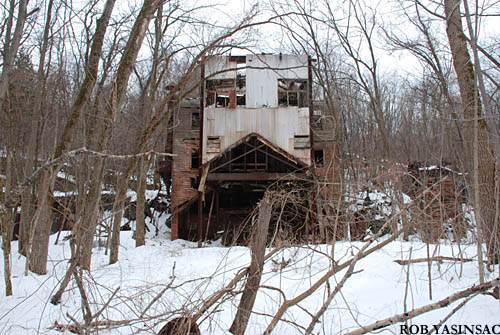
Brick machine building.
This photograph and all others taken December 25, 2007, unless otherwise
noted.
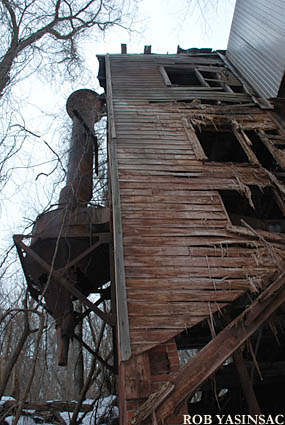
Brick machine building.
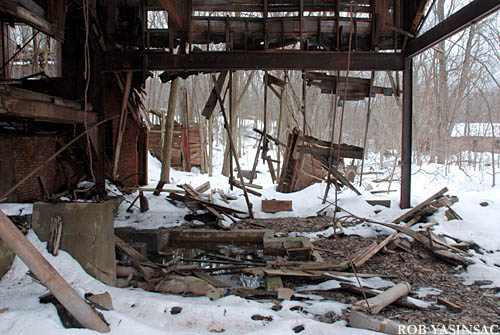
Brick machine building.
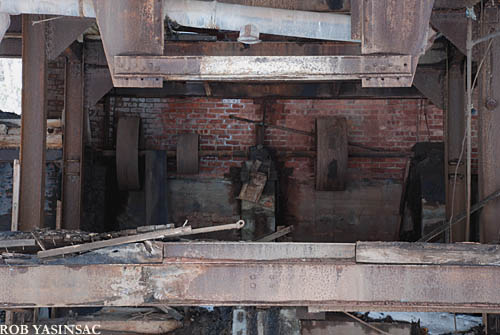
Inside the gear pit of the brick machine
building.
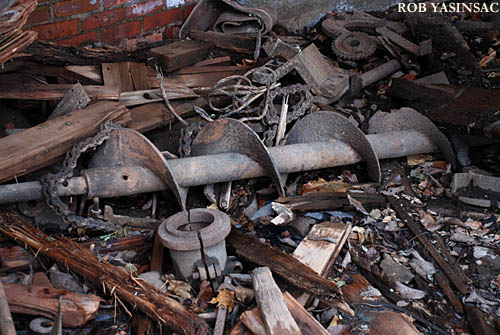
Brick machine parts.
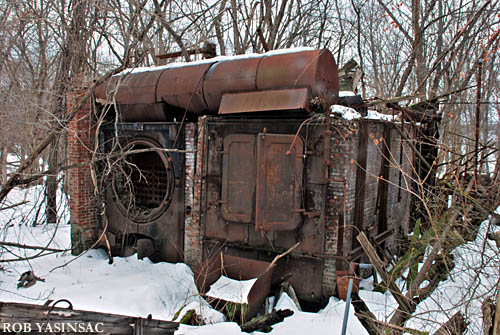
Boiler.
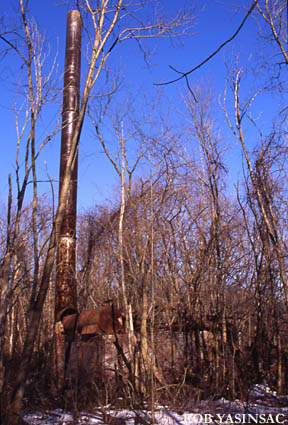
Boiler flue, December 27, 2003.
Although the boiler remains, the metal flue has been taken down.
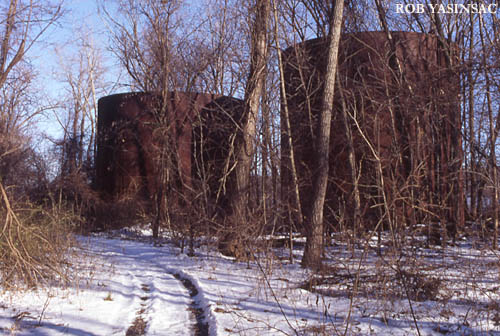
Water Tanks. December 27, 2003.
The tanks have since been removed from the site.
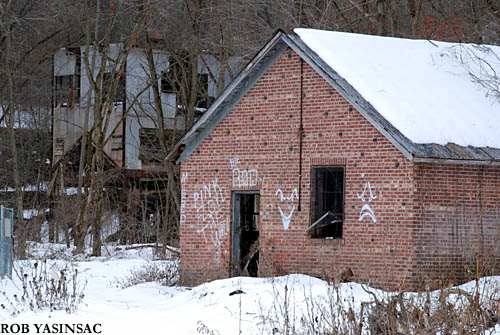
Garage / Workshop.
More
Staples Brickyard photos - Page 2
This page copyright © 2007
by Robert J. Yasinsac.
Reproduction or copying of text and/or photography in any form without
permission of the author is not permitted.